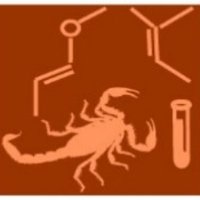
Thomas Lund Koch
@lundkoch
Developing and applying novel computational methods for neuropeptide and toxin discovery and characterization as postdoc in the Safavi lab
ID: 1205077245179695104
12-12-2019 10:49:51
40 Tweet
94 Followers
400 Following


So happy to finally see this out Society for Molecular Biology and Evolution!💃 This is one of the outputs of my Marie Skłodowska-Curie Actions carried out at Natural History Museum and Museo Nacional de Ciencias Naturales where we looked into ribbon worm 🪱 #toxin evolution, expression patterns and tissue distribution. Check it out! 👇 bit.ly/3PcmprU

Do you know that insulin is something that's common between cone snails and viruses? In this review, we ([email protected] and Danny Chou ) discuss the discovery of insulins that cones and viruses use to hunt prey & influence host physiology. 1/3

Our new paper "Discovery and functional characterization of neuropeptides in crinoid echinoderms" published today. Congrats to Alessandra Aleotti & thanks to all co-authors Queen Mary University of London University of Milan University of Glasgow and to The Leverhulme Trust Biotechnology and Biological Sciences Research for funding. frontiersin.org/articles/10.33…

Our work on the evolution of DEG/ENaC channels and how one of them controls acid-based discharge of cnidocysts is published in Communications Biology. Collaboration with Stefan Gründer RWTH Aachen. Thanks to Adrian Jaimes-Becerra Dr. Katharina Foreman (she/her) and Rubi Aharoni 🦁🇮🇱 nature.com/articles/s4200…

So proud of this! 🎉 🎉 Our work on the genome of Owenia and the mechanisms driving the evolution of larvae is just published in nature. It was a team effort, but special praise goes to @lynnmariposa and Francisco M Martín-Zamora, who never gave up. Queen Mary University of London QM_SBBS nature.com/articles/s4158…

Crouching Tiger, Hidden Protein 🐯🪲 Read this article published by #mdpitoxins, which searched for Insecticidal Toxins in Venom of the Red Tiger Assassin Bug (Havinthus rufovarius) 👉mdpi.com/933136 This cool study is from Dr. Andrew A Walker et al. 🎉





In collaboration with Meet Zandawala, we have found the elusive Branchiostoma GnRH, demonstrating that both GnRH and Corazonin exist in cephalochordates and clarifying the evolutionary history of these systems. Thanks to the Biotechnology and Biological Sciences Research for the funding. tinyurl.com/mrx46hw3







Excited to share our latest story on how fish-hunting cone snail uses a combination of weaponized insulin and somatostatin-like toxins to disrupt glucose level in its fish prey 🐚⚡️🐠🍬 Check out our paper and animation to learn more: nature.com/articles/s4146… Nature Communications 🧵1/5



